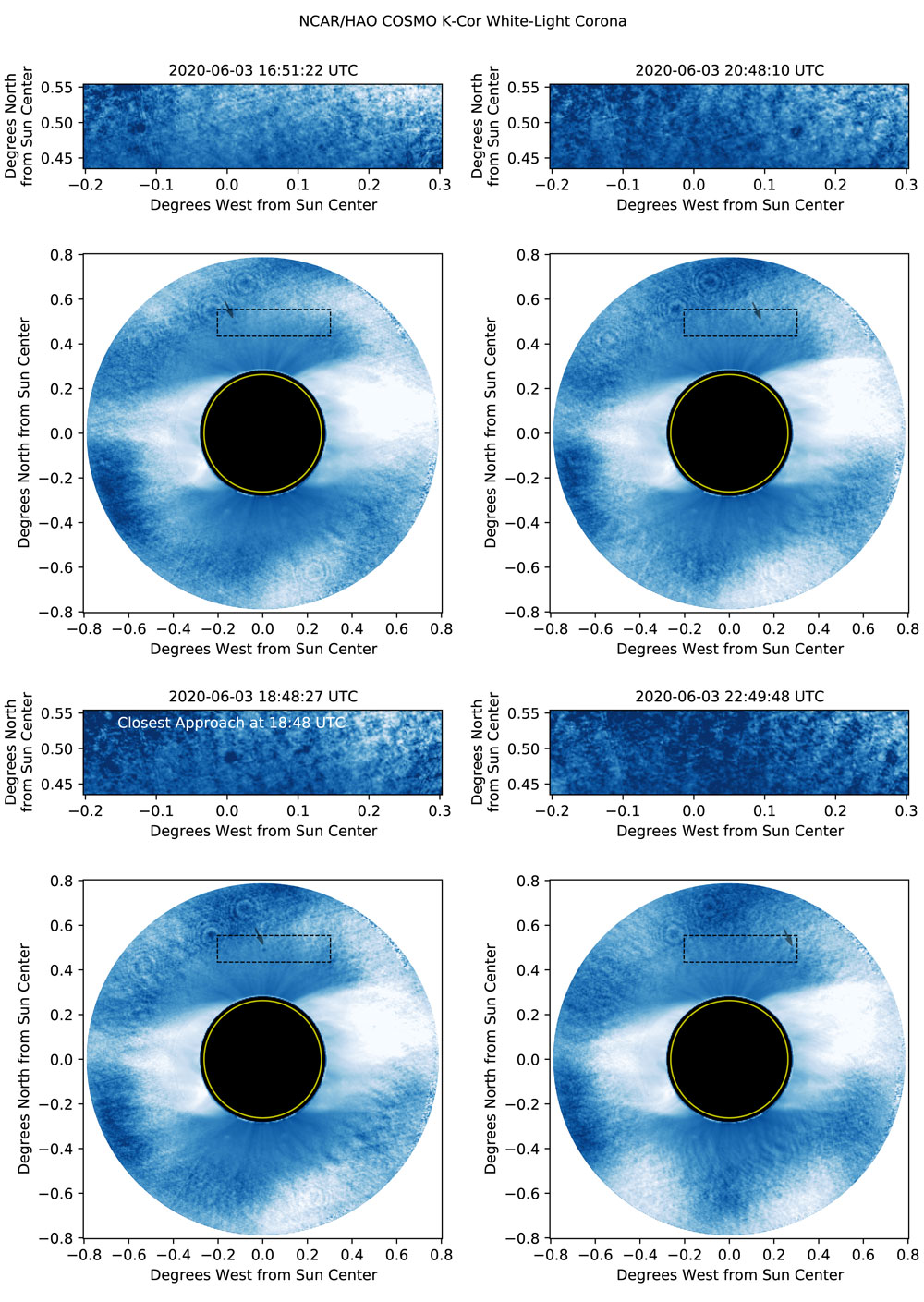Two astronomers captured the silhouette of Venus as it passed in front of the solar corona.
Sixteen years after Venus passed in front of the Sun in 2004, and eight years after its 2012 transit — rare events that won’t happen again until 2117 and 2125 — Venus again passed near the Sun on the sky. This time, while Venus did not pass directly across the Sun’s disk from our point of view, it did pass over the solar corona, coming within 13 arcminutes of the disk on June 3rd at 18:48 UT (2:48 p.m. EDT).
The videos below show two views of Venus's corona transit. The second view has a different scaling to show Venus better, and the planet's closest approach is marked.

Alfred de Wijn and Gunther Können
Alfred de Wijn and Gunther Können
Alfred de Wijn (High Altitude Observatory, National Center for Atmospheric Research) and Gunther Können (Royal Netherlands Meteorological Institute) recorded Venus’s passage in front of the corona using the K-coronagraph (K-Cor) instrument at the Mauna Loa Solar Observatory on Hawai’i. K-Cor makes an artificial solar eclipse to observe the corona, then further separates the polarized light of the solar corona from the much more intense, but only weakly and differently polarized sky background.
If the image showed unpolarized light, the atmosphere of Venus would make a ring around the planet as the Sun illuminates it from behind. But because these K-Cor observations show only polarized light, the movie shows only the dark silhouette of Venus as it transits the tenuous corona.
The brightness of the corona drops rapidly with distance from the solar disk, so the images are scaled with a radially graded filter to improve the contrast. The movie starts about two hours prior to the closest approach, and continues for about four hours after.
The transit of Venus over the corona can only be observed with a highly specialized coronagraph like K-Cor – unless by coincidence there is a total solar eclipse at the same time. But that’s exceedingly rare. In the period 0 to 4000 AD there are only two total eclipses where Venus’s silhouette is less than 0.5° from the solar limb. In 1769 there was an eclipse 6–8 hours after a transit of Venus, when Venus was at least 23 arcminutes from the limb. The second case is in 2263, when Venus passes within 13 arcminutes of the edge of the Sun’s disk.
June 3rd — and some specialized equipment — therefore offered the best chance of seeing Venus transit the corona. Venus won’t pass so close to the Sun again until December 2109, eight years before the next transit of Venus in 2117.

Alfred de Wijn and Gunther Können
Jean Meeus kindly calculated the details of the minimum distance between Venus and the Sun. This material is based upon work supported by the National Center for Atmospheric Research (NCAR), which is a major facility sponsored by the National Science Foundation and managed by the University Corporation for Atmospheric Research. Any opinions, findings and conclusions or recommendations expressed in this material do not necessarily reflect the views of the National Science Foundation. The Mauna Loa Solar Observatory is managed and operated by NCAR’s High Altitude Observatory.
 0
0









Comments
You must be logged in to post a comment.